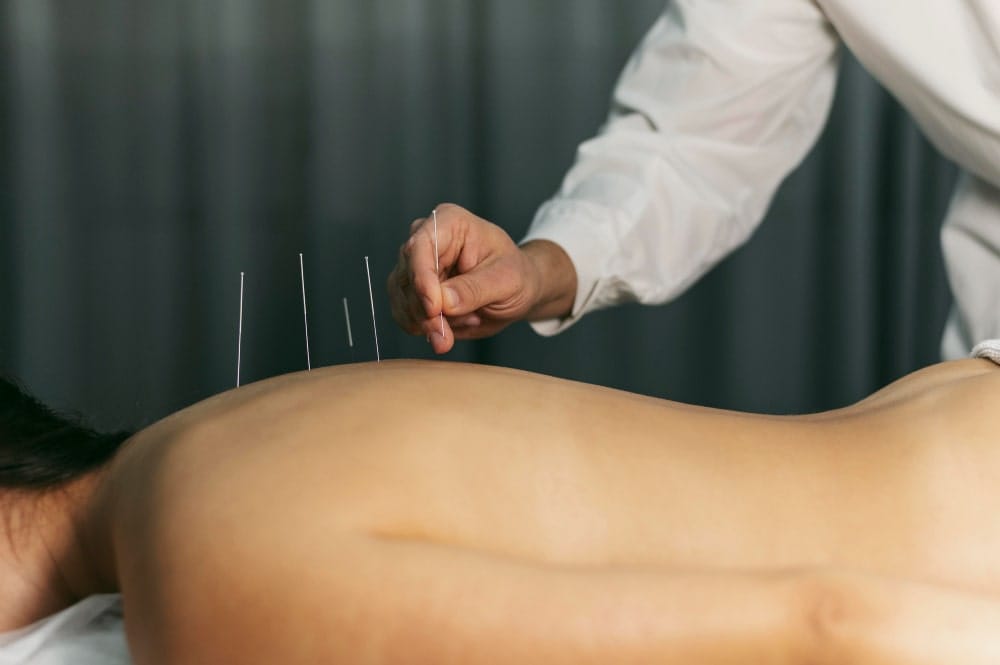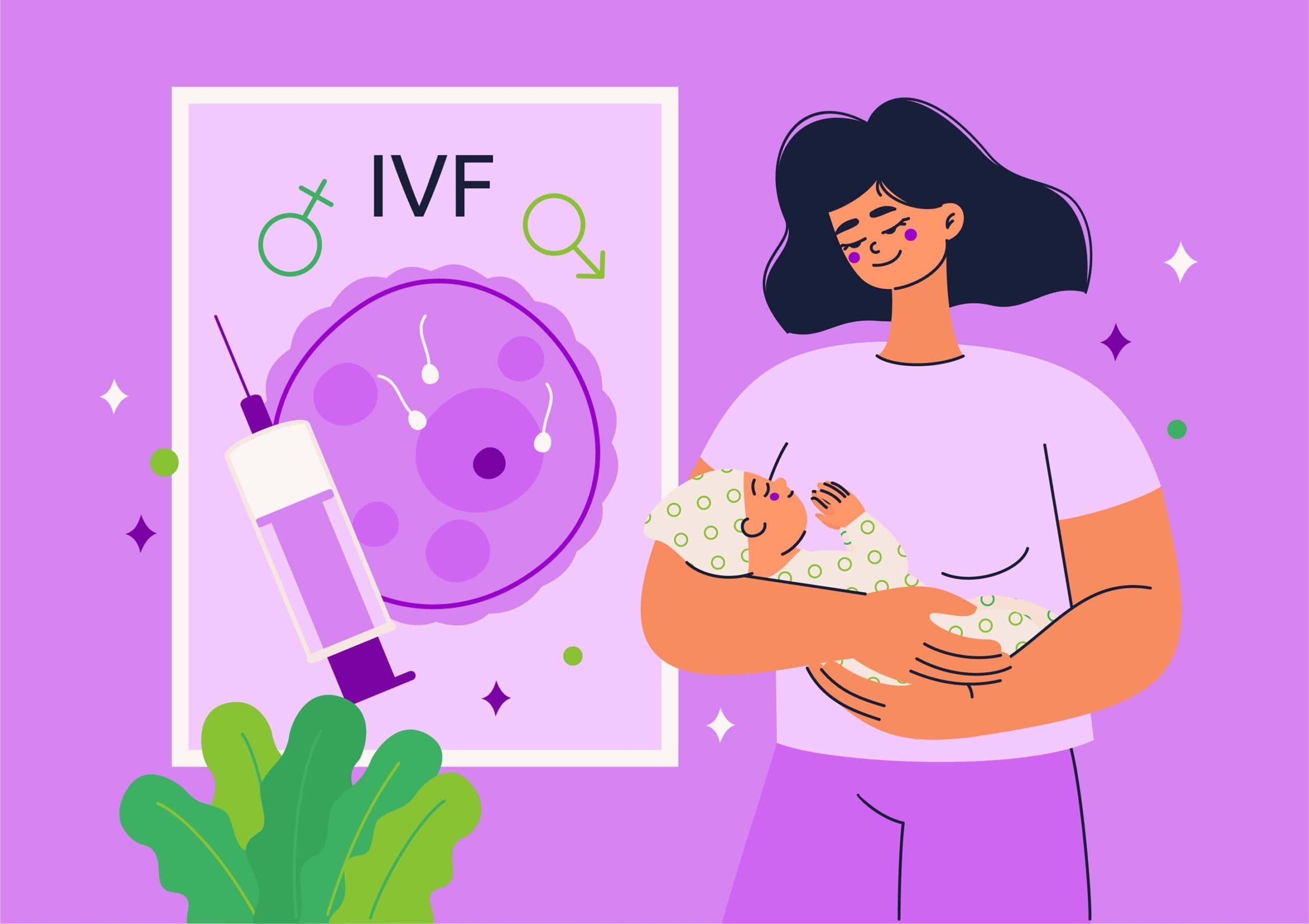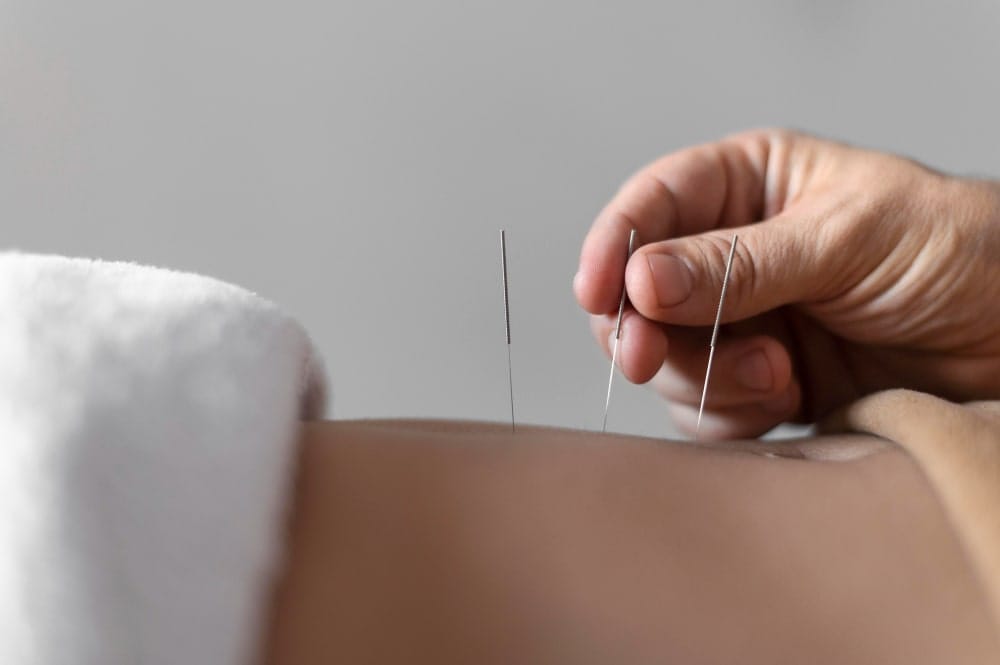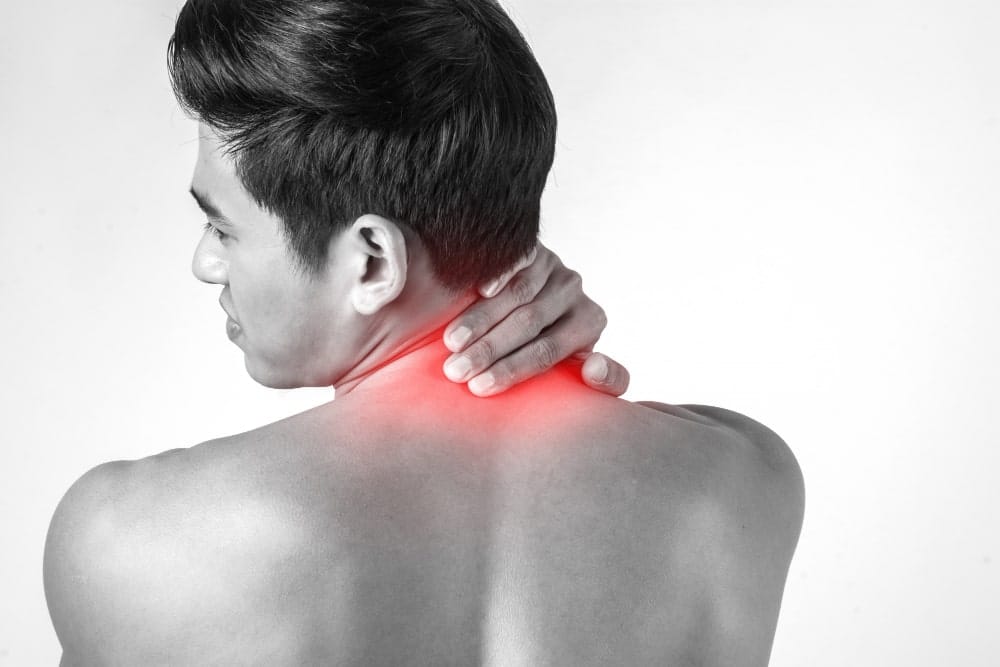Muscle pain, tension, and restricted movement can negatively impact daily life, making even simple activities uncomfortable. Whether you’re dealing with chronic discomfort, recovering from an injury, or an athlete striving for peak performance, finding an effective treatment is crucial. One technique that has gained widespread attention for its ability to relieve muscle pain and aid recovery is dry needling.
Although it may seem different from traditional acupuncture, dry needling is actually a targeted acupuncture technique that focuses on muscle dysfunction, reducing pain, and enhancing mobility. If you’re curious about this approach and whether it can help with your condition, let’s explore dry needling in detail—how it works, its benefits, and what to expect from the treatment.
What is Dry Needling?
Dry needling is a minimally invasive therapy that involves inserting ultra-thin, sterile needles into specific areas of the muscles known as trigger points. These trigger points are tight, painful knots that can develop due to muscle overuse, stress, injuries, or postural imbalances. They often contribute to discomfort and restricted movement, making it difficult to perform daily activities.
Unlike injections that deliver medication into the body, dry needling uses solid, fine needles with no substance inside—hence the term “dry” needling. The goal is to stimulate the body’s natural healing process, relieve tension, and restore normal muscle function.
How Does Dry Needling Work?
The effectiveness of dry needling lies in its ability to stimulate trigger points and reset muscle function. When a needle is inserted into a tight, dysfunctional muscle, several physiological changes occur:

- Muscle Release: The insertion of the needle may trigger a local twitch response, which helps the muscle relax and break the cycle of tightness and pain.
- Increased Blood Circulation: By improving blood flow to the affected area, dry needling enhances oxygen and nutrient delivery, supporting tissue repair.
- Pain Reduction: The process stimulates the body’s natural pain-relieving chemicals, such as endorphins and serotonin, reducing discomfort.
- Neuromuscular Reset: Dry needling interrupts pain signals sent to the brain, allowing the nervous system to reset and improve movement patterns.
The combination of these effects makes dry needling highly effective for treating musculoskeletal pain and improving physical function.
How Dry Needling Fits Within Acupuncture
While dry needling and acupuncture share similar tools—fine needles—they are part of the same healing tradition. Acupuncture, a key component of Traditional Chinese Medicine (TCM), has been used for centuries to restore balance within the body by targeting meridian points. Dry needling, as a modern application of acupuncture, specifically addresses musculoskeletal pain by focusing on trigger points within muscles.
Rather than being a separate practice, dry needling is a part of n advanced acupuncture techniques designed for pain relief, injury recovery, and movement enhancement based on the knowledge of anatomy and physiology. Many acupuncture practitioners incorporate dry needling into their treatments, particularly when addressing chronic pain, sports injuries, and muscle tightness.
Key Benefits of Dry Needling
Dry needling has gained popularity among athletes, office workers, and individuals with chronic pain due to its remarkable benefits. Here’s how it can help:
Reduces Muscle Pain and Tension
Dry needling effectively releases tight muscles, reduces spasms, and alleviates trigger point discomfort. It is widely used for conditions such as:
- Lower back pain
- Neck and shoulder tightness
- Tension headaches and migraines
- Sciatica and hip pain
- Sports-related injuries
By addressing the root cause of pain, it provides long-lasting relief and restores function.
Accelerates Muscle Recovery
Whether recovering from an intense workout or dealing with post-injury soreness, dry needling helps speed up muscle healing by:
- Enhancing circulation to deliver oxygen and nutrients to damaged tissues
- Reducing inflammation and promoting tissue repair
- Preventing scar tissue buildup, which can restrict movement
This makes it a powerful tool for athletes and individuals recovering from injuries.
Improves Mobility and Flexibility
Tight muscles and trigger points can limit joint mobility and flexibility, making movement difficult and painful. Dry needling helps:
- Restore full range of motion
- Release stiffness caused by prolonged sitting or poor posture
- Enhance flexibility for improved athletic performance
For people with frozen shoulder, or knee pain, or restricted movement due to injury, dry needling can be highly beneficial.
Complements Other Therapies
Dry needling is often integrated with physical therapy, chiropractic care, and rehabilitation programs to enhance treatment outcomes. It works well for:
- Post-surgical recovery
- Rehabilitation after fractures or injuries
- Managing chronic pain conditions like fibromyalgia
When combined with stretching and strengthening exercises, it maximizes healing and long-term results.
Is Dry Needling Safe?
Yes, dry needling is a safe and effective treatment when performed by a trained professional. The procedure uses single-use, sterile needles, and the risks are minimal. Some individuals may experience mild soreness or slight bruising after treatment, but these effects typically fade within 24-48 hours.
To ensure the best results, it’s important to visit a certified practitioner who specializes in dry needling techniques.
Who Can Benefit from Dry Needling?
Dry needling is suitable for a variety of people, including:
- Athletes recovering from muscle strains or overuse injuries
- Office workers with chronic neck and back pain
- Individuals with postural imbalances or repetitive strain injuries
- People suffering from conditions like arthritis, sciatica, or migraines
If you experience persistent muscle pain, stiffness, or movement limitations, dry needling may be an excellent option to help restore your mobility and well-being.
What to Expect During a Dry Needling Session
If you’re trying dry needling for the first time, here’s what you can expect:
- Initial Evaluation: Your practitioner will discuss your symptoms, medical history, and treatment goals.
- Needle Placement: Fine needles will be inserted into targeted trigger points. You might feel a slight twitch response or mild discomfort.
- Needle Retention: The needles remain in place for a few minutes to stimulate healing.
- Post-Treatment Care: Your provider may recommend gentle movement, hydration, and light stretching to enhance recovery.
Most people notice immediate improvements in pain relief and muscle relaxation, while others may require multiple sessions for lasting benefits.
Experience Lasting Pain Relief with Swiss Acupuncture
Are muscle tension, stiffness, or chronic pain also limiting your daily life? At Swiss Acupuncture, we specialize in dry needling, a precise and effective technique that targets deep muscle knots, reduces pain, and restores mobility. Whether you’re an athlete, recovering from an injury, or simply looking for relief, our expert care can help you move freely again. Don’t let pain control your life—schedule a consultation today and take the first step toward a pain-free future!
Final Thoughts
Dry needling is a highly effective technique for reducing muscle pain, enhancing mobility, and accelerating recovery. Whether you’re an athlete, someone suffering from chronic pain, or recovering from an injury, this treatment can provide significant relief and improved function.
If you’re interested in trying dry needling, consult a qualified professional who can assess your condition and create a treatment plan tailored to your needs. With the right approach, you can regain mobility, reduce pain, and improve your overall well-being naturally.







